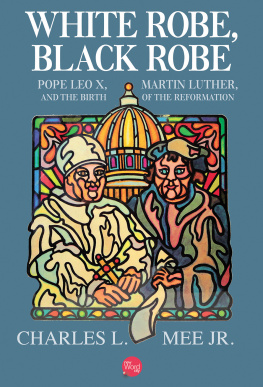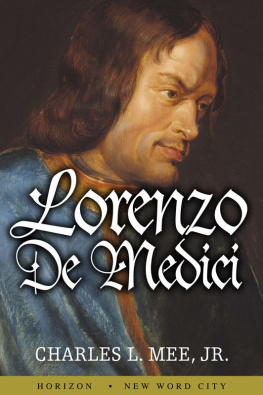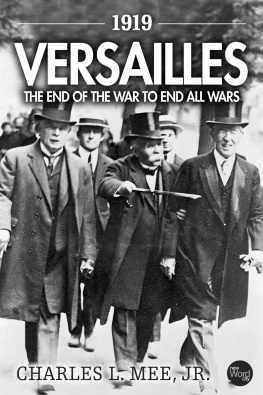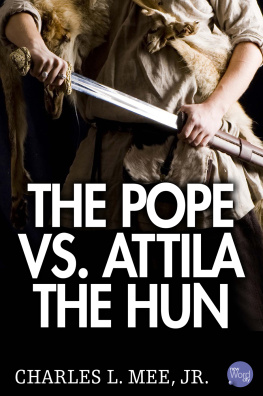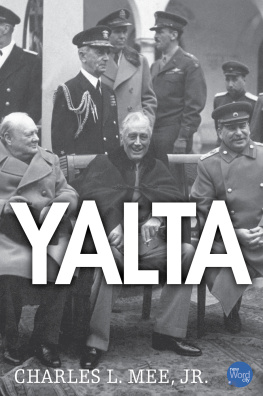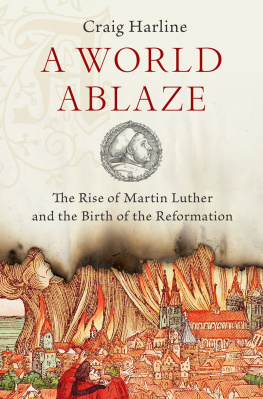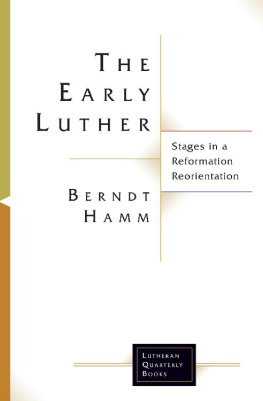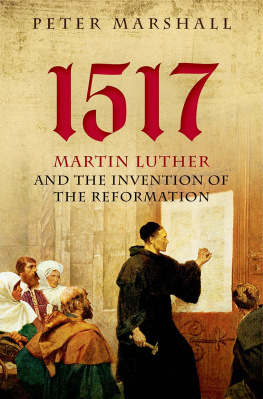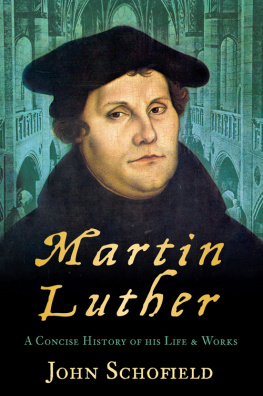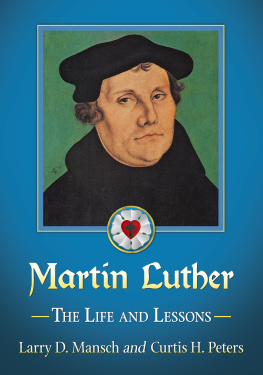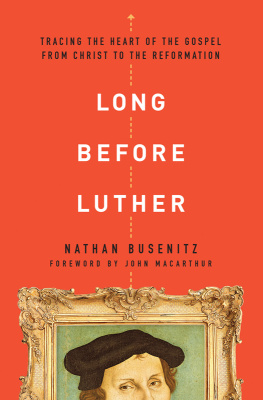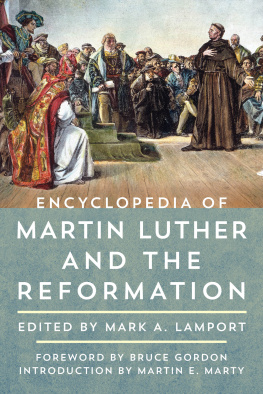In 1513, Giovanni de Medici, son of Lorenzo de Medici of Florence, was elected pope of the Roman Catholic Church, and he took the name of Leo X. He was a pleasure-loving man who entertained poets and painters and dramatists at his papal court and, in order to complete St. Peters Cathedral, that great monument to the church united and triumphant, proclaimed the sale of indulgences in Germany. In 1517, on a clear, crisp day, Martin Luther tacked his ninety-five theses to the door of the Wittenberg church. In 1521, Luther was summoned to the Diet of Worms and his teachings were condemned - and in that same year, Pope Leo X died, pleased in the knowledge that he had satisfactorily settled that monkish squabble.
That is the story of this book. It is a story that has been told many times before, and like the myth of Oedipus or of Prometheus, seems to have an ineluctable hold on our unconscious. According to one biographer of Luther, more than 600 books, monographs, and articles are published every year about that tantalizing rebel. (At the same time - such is the fate of historical loser - no biographer has turned his hand to Leo since 1908.) Each time the story is told, it changes, to be sure. The religious historians who had the first crack at it naturally saw it as a revolution in the church, brought about by a villain (or a hero), or as a theological great leap forward (or a lamentable heresy). Leibnitz saw Luther as the hero of conscience, and Federick the Great viewed him as a champion of German nationalism. The nineteenth-century historians seem - at least to me - to have been preoccupied with a sense of moral fitness about the whole encounter. William Roscoe, in his biography of Leo, sniffed at the question of Vatican mistresses and explained them away as after all, not to be especially remarked in the time in which these men lived. And Luthers barnyard imagery is similarly explained away by his partisans. Manners and appearances need to be kept up, and both these men, after all, have heroic proportions to them.
In the twentieth century, social historians went over the story and saw it as a struggle between one emerging class and an other, corrected by the economic historians who provided us with the new capitalism and a gradual depression in the fifteenth century, corrected yet again by historians who perceived here the warring of proto-nations. Erik Erikson analyzed Luther as a psychological case history. In most of these works, we see how inevitable the Reformation was, because of the economic forces, or the general sociopolitical background of the era, or the forceful temperament of our hero, or whatever. Luther is seen to have been destined to prevail; destiny works famously well in hindsight.
It should not be surprising that in this book, given my own times, I see the story of Leo and Luther as a confrontation between the classic, the archetypal establishmentarian and the archetypal revolutionary. But I would not wish to burden the story with just one more interpretation. While my bias is to see archetypes of some contemporary interest in the story, I have tried to keep closely to the characters of the two men and see the story as they did - a destiny worked out moment by moment, with no certain future. In my defense, and in defense of others who have not entirely succeeded in writing the story in this way, I must acknowledge it is not easy, for Luther very early develops a powerful, purposeful character that will not be denied.
I have relied heavily, and gratefully, on the work of Luther scholars in writing this book. If I were to make any claim on historiography with the book, it would be that I have restored Leo X to what I believe is his rightful, though astonishingly neglected, place in the story. (Even Erik Erikson, in his otherwise superb psychological study of Luther, in which he sees Luthers principal conflict as revolving about his father, gives us no glimpse of the pope - il papa.) I am surprised to be the first to bring Leo back into his crucial role in this historical era and hope I shall not be the last. For revolutionaries are made at least as much as they are born, and every protagonist has an antagonist who helps to shape his destiny and that of the world they share. If we do not understand that, we do not understand revolutionary movements.
Early in December of 1475, the wife of Lorenzo de Medici awakened to report that she had dreamed she had given birth in the Florentine cathedral to a large but docile lion. In our own day, perhaps, no woman would have the temerity to admit to such a dream for fear of what her family would make of it. But at that time, it was a mighty dream - one to be conjured up at midday if one were not so fortunate as to have conceived it while asleep.
Shortly thereafter, her second son was born. As was the custom among Italian families, the second son was destined for a career in the Roman Catholic Church, and the portent before his birth was doubly fortunate. It signaled eminence, of course; it signaled that a veritable king was to be sent out into the jungle of church politics. But the lion is the ancient symbol of Florence, too, and thus, the mothers fortuitous dream signified that her sons illustrious destiny was to be linked to that of his native city. Here was a son fit for the Medici dynasty. Here was a son to ensure Medici rule of both church and state. Here was a son to devour the world. It never seemed to occur to the Medicis that the world might one day devour him.
For such a son, there can never be too many good omens and portents and auspices, and so the boy was named Giovanni. The name, like the dream, was a double invocation of august tradition, for San Giovanni was the patron saint of Florence, and the boys great-great-grandfather was Giovanni di Bicci de Medici.
Born in 1360, Giovanni di Bicci was the first notable member of young Giovannis family. He was a rotund country squire who concealed under a good-humored simplicity a vast resource of quiet shrewdness. He avoided political entanglements and, all but unnoticed, amassed a fortune in commerce and managed to become banker to the pope and his court in Rome. Henceforth, 90 percent of Medici wealth would come from banking, half their banking profits and most of their working capital from Rome. There was never any doubt in the Medici family that Christs representative on earth was a person of particular importance.
By 1427, Giovanni di Bicci was listed in the tax records as the wealthiest man in his quarter of Florence. He left only one visible trace in passing through his life in Florence: He commissioned the architect Filippo Brunelleschi, then at work on the dome of the Florentine cathedral, to design a sacristy for the Church of San Lorenzo. But it was a pious act, not an ostentatious one, for Giovanni no doubt did it in hopes that God, or at least the pope, would then forgive him for usury. Before he died, he left his family this advice: Never hold an opinion contrary to the will of the people, even if this same people should prefer something that is perfectly useless. Do not speak with the air of giving counsel, but prefer rather to discuss matters gently and benevolently.... Be as inconspicuous as possible.
The Medicis all display a genius for ignoring the advice of their fathers. When Giovanni di Bicci died in 1429, his son Cosimo became head of the family. With Cosimo, the Medicis rose from studied obscurity to brilliant prominence with a sure and stunning rapidity. Supremely cunning, cautious, and possessed of an iron will, Cosimo was very conspicuous, indeed. He ensured, first of all, that he had firm control of the tumultuous Florentine government. He achieved the control not without struggle and not without an occasional setback (at one time he was exiled by a rival faction). But control the nominal republic he did. He served only three two-month terms as the gonfalonier, the highest political office in Florence. Choosing to remain behind the scenes, he was a boss whose finely wrought political machine managed to elect Medicean governments beginning in 1434 until the death of his grandson Lorenzo in 1492.

